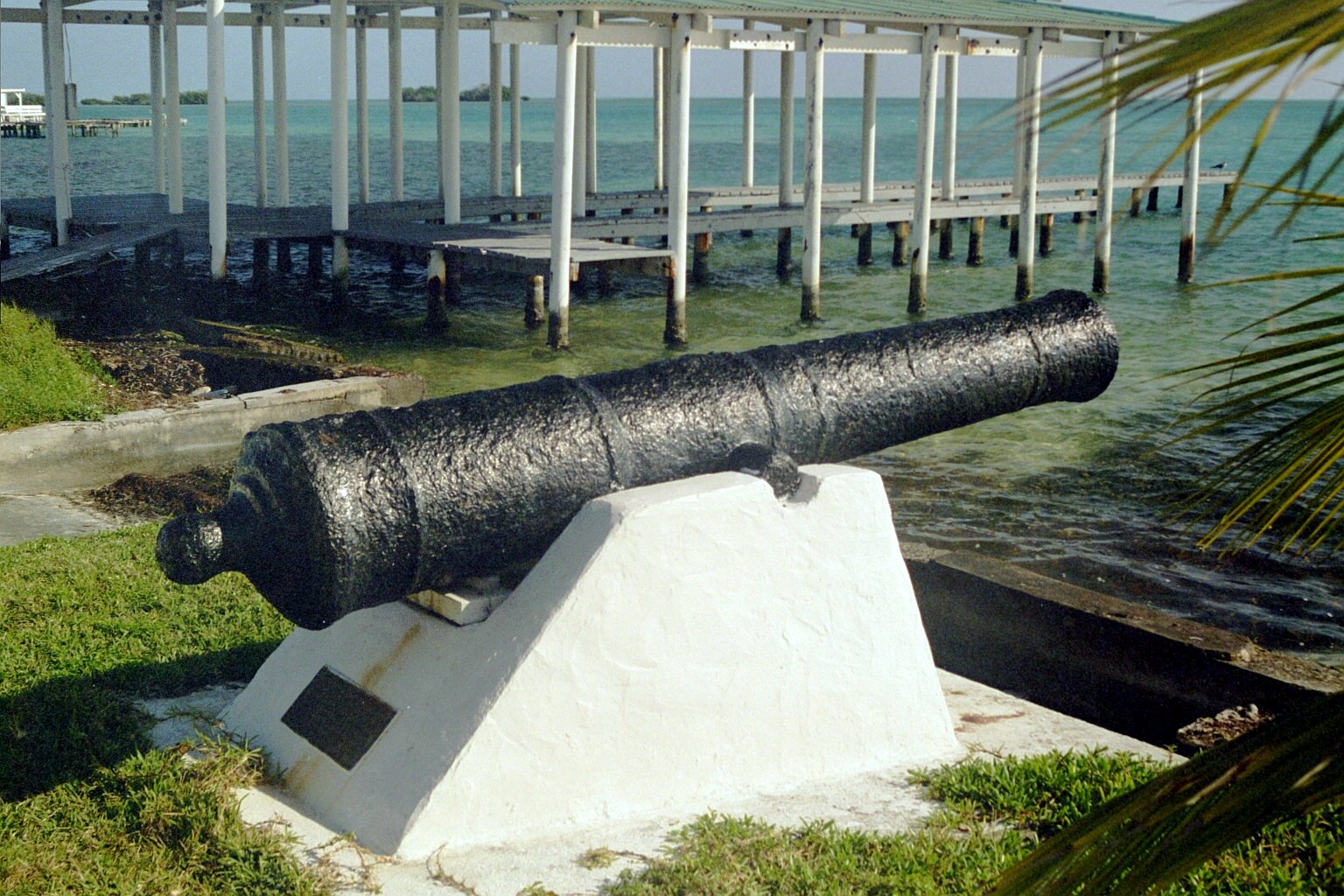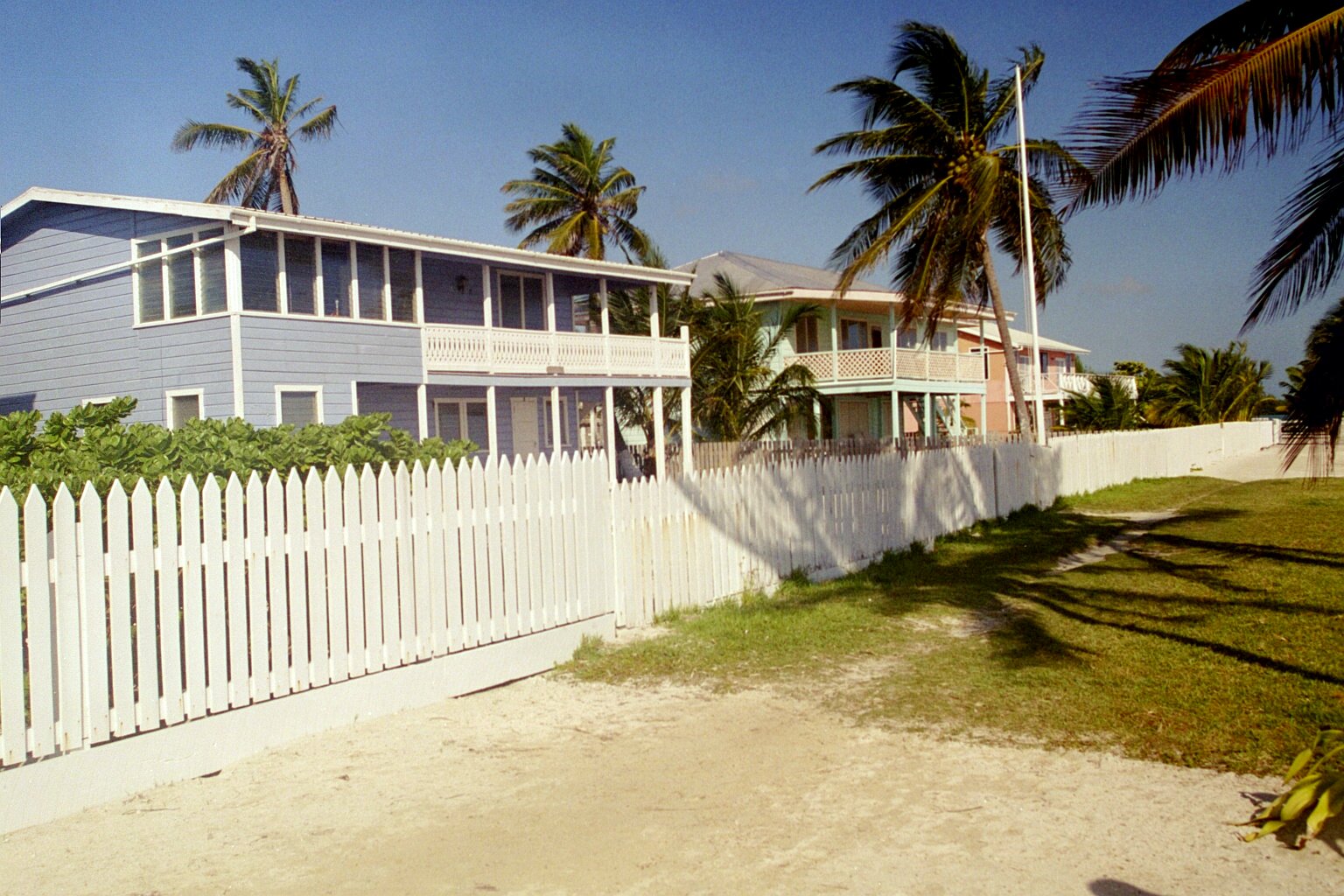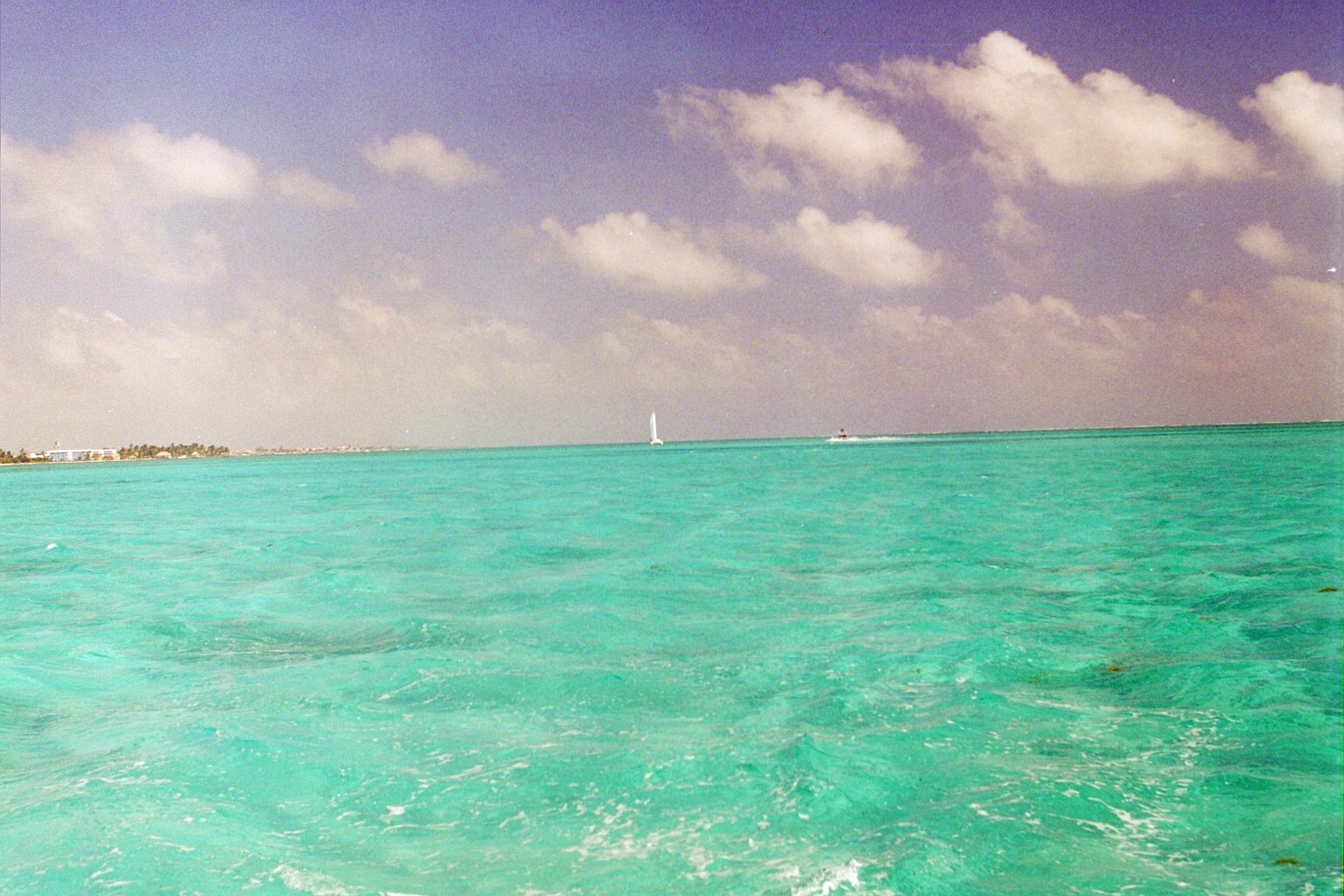Sailing Away
Just as we retired to our breezy cabins (the wind kicks up at night in this part of the Caribbean) at an obscenely early hour, we rose equally early. The sunrises over the reef are breathtaking, accompanied as they are most mornings by some cloud cover on the eastern horizon. We started our morning boat routine of lavish application of sunscreen (yuck), writing in journals, studying charts, drinking coffee (iced tea for me), running the engine to charge the batteries and refrigerator, and breakfast of yogurt and granola or Pop-Tarts.
At 8:30, we had our chart briefing with David from TMM, a Belizean whom TMM considers one of its best captains. We shared the briefing with Bob and Carol aboard Bedazzle, the Lagoon 41 which they own and have placed in service with TMM; they are leaving today as well. David's briefing was very thorough and funny. It quickly dawned on me that these islands are not the relatively easy BVIs or Abacos, which are thoroughly charted and waypointed. Here, the best cruising guide was most recently updated 7 years ago and features hand-drawn charts, so a Belizean charter adventure is definitely not for those with marginal navigation skills.
David then took us out on the boat to the reef so that he could show us how to identify the coral heads and demonstrate how essential it is to have good light. Hull-crunching coral lurking just beneath the surface, which is invisible with the sun in front of us, comes into full, frightening (to me) view with the sun behind us. Satisfied that he'd shown us what we needed in this 5 minute jaunt, David helped us raise the mainsail, radioed the TMM chase boat, and slipped away, sending us on our way by 10 a.m.
Now, I've heard it said (sometimes by my very own lips) that cats point like dogs. Whether true or not, this was irrelevant on this trip because we never had to sail upwind. Unless a norther rolls through the region, winter winds come reliably from the E to ENE in the winter; with the cayes arrayed from north to south, we had delicious beam reaches every time we raised the sails. And so it was when we set off in 10-15 knots of breeze to the next caye down, Cay Caulker. We skimmed across the smooth blue sea with Rick or Jeff at the helm, while I sat forward on one of the hulls, learning how to "read" the water (which was not strictly necessary on this passage, since there is no minefield of coral heads here).
While underway, I make a lunch of turkey wraps with the delicious local tortillas I buy instead of bread here. By noon, we were anchoring on the back side (west) of Cay Caulker, near the settlement. This was intended to be a brief stop to buy some fresh seafood from the fisherman's co-op, but they apparently are closed on Sundays. Nevertheless, we tie the dink at the commercial dock (there are no dedicated dinghy docks here) and hit the sandy streets of the town to get a look at the colorful businesses lining the sandy streets. After getting a few more provisions, we take off again, heading for St. George's Cay for the night.
After leaving Cay Caulker behind us, we zoomed alongside Chapel Cay, a private island, before reaching a narrow channel portentously called Porto Stuck. Here, we obediently dropped the sails and fired up the twin diesels to traverse through (per David's instructions), watching carefully for the 5-foot light tower marking the channel, and then the three sticks (literally) marking its eastern edge. Onward to St. George's Cay, which is shaped like a crescent moon open to the southwest, offering great protection, but the anchorage is very shallow with a bottom thick with turtle grass. The anchoring process was slow, as we searched for a sandy spot, and we put down a second anchor (the Fortress) to supplement the Delta #35.
Finally satisfied, we jumped in the warm water and bathed. After getting cleaned up, I rustled up tortilla chips (made from those wonderful local tortillas) and salsa and made one of my special Belizean cocktails. In the local markets during our last visit, we discovered a local fruit juice concentrate I've only ever found here which makes an amazing cocktail. Today's mix featured "Seabreeze Punch" (red, grapefruity, tangy), ginger ale, and dark rum. We toasted an amazing sunset over Belize City, 20 miles west of us. Dinner was a bit dicey, since the solenoid to the propane tanks was acting dodgy, but eventually I managed to make a marinara sauce with Italian sausage to serve over saffron rice, finished with Belikin and Oreos (with yellow cream filling yuck!) for dessert.
After cleaning up, we stretched out on the trampoline and watched the stars. Once again, we retired early. Sleeping was very comfortable with the reliably breezy conditions; in fact, most nights I had to close the hatches to avoid getting a chill. There was on brief burst of rain overnight, but the 2:00 a.m. Hatch Drill was not required.
Monday morning, after completing our morning chores, we went ashore. We tied the dink up at the dock of the St. George's Lodge, a very intimate dive resort which features a main lodge an overwater palapas. The grounds are especially lush and attractive, showing the work of loving and devoted hands. We asked our host for permission to tie up the dink, and he was appreciative that we'd even bothered, since apparently others don't. We walked across the Lodge's grounds to the "front" side of this very narrow cay, and walked along the sandy paths and lawns of the attractive and brightly-colored homes facing the sea. There weren't many signs of habitation here, despite the lovely homes; the cay had a decided "edge of the Empire" feel to it.




